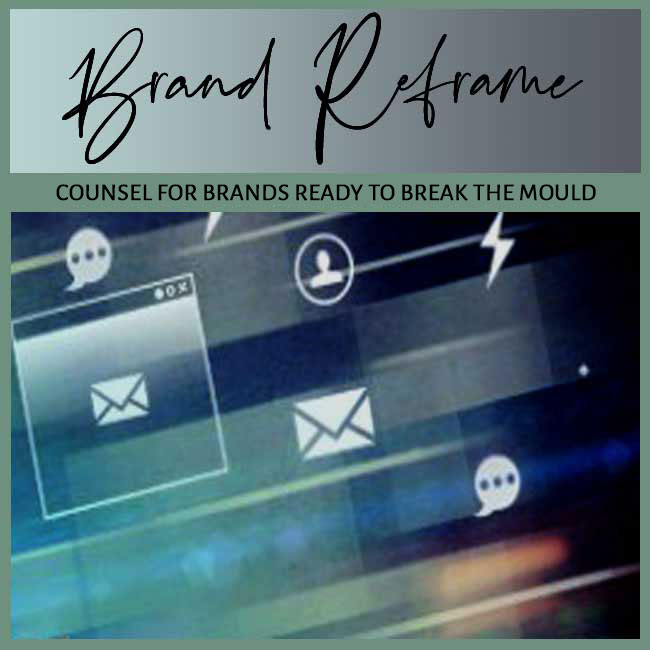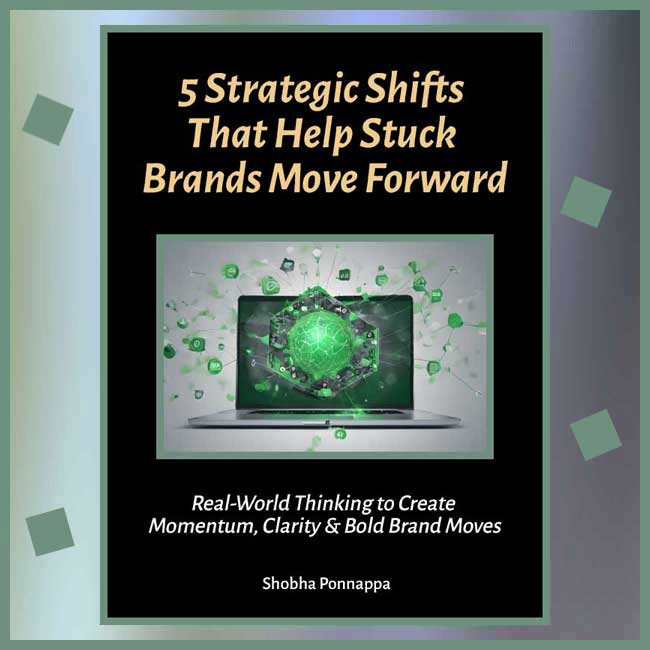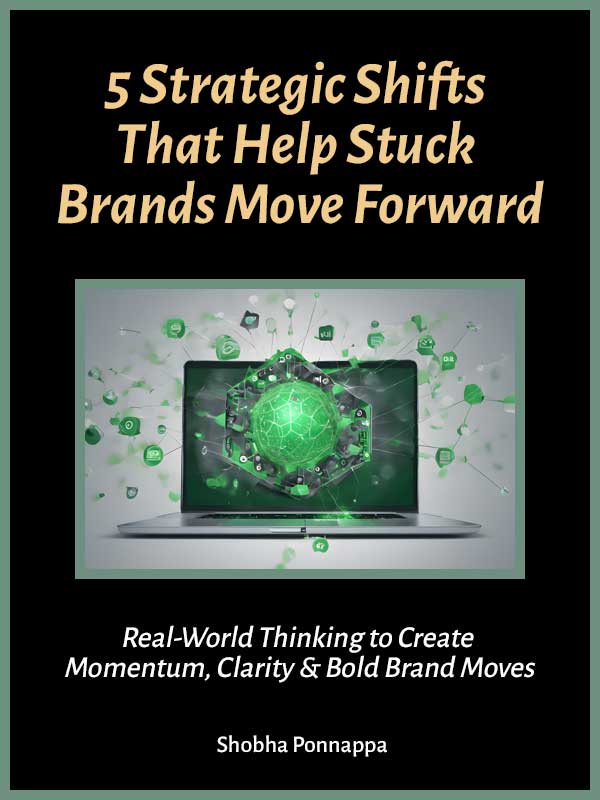
BRAND LAUNCH FAILURE | AUDIENCE: INVESTORS IN SLUGGISH BRANDS
I answer 6 tough questions about how brand distinctiveness can get lost in the momentum of start-up growth … and how to fix it.
Investors often call me when a promising start-up begins to stall. In the earliest days, there was clarity, voice, and a distinct brand edge. But somewhere between launch and traction, that distinctiveness fades. As the team scales and operations expand, brand decisions get delegated—or worse, diluted. In this post, I answer the 6 questions I hear most when founders and investors realise that scale has come at the cost of clarity.
Early-stage teams are lean but hungry. In the scramble to build, ship, and raise, brand often becomes the collateral. Founders focus on product-market fit, investor decks, and acquisition channels … while the brand narrative gets left behind.
In these rushed transitions, nobody guards the original story. So it splinters. A distinct brand becomes a patchwork of campaigns, slogans, and voices trying to keep up with growth. The loss is subtle … until it’s stark. Once momentum becomes the only metric, memorability quietly slips. Eventually, even loyal customers may forget what made the brand worth following in the first place.
It’s a strategic oversight during scaling. Growth isn’t the enemy … growth without message discipline is. Most start-ups mistake brand for a launch asset, not a scale enabler. They think it’s something to outgrow, rather than deepen.
Without embedding brand discipline into scale plans, teams improvise. That improvisation chips away at cohesion, especially across content, UX, and partnerships. And when cohesion erodes, trust and recall begin to follow. As clarity fades, so does conversion confidence.
Because in early stages, the product is the hero. Founders often believe a good solution sells itself. They underestimate how much their early traction came from a sharp voice and differentiated narrative.
Once marketing is handed over to junior hires or multiple vendors, that early spark fades. Consistency breaks. Suddenly, the brand looks mature … but feels generic. It becomes visible but no longer visceral. Customers feel informed … but not inspired.
Your metrics may still show growth … but your engagement starts to flatten. Messages get ignored. Creative feels safe. Customers can’t tell what sets you apart anymore.
When everyone in your category sounds interchangeable, your brand is no longer leading … just participating. And that’s the beginning of inertia. Brand drift shows up long before revenue decline does. It’s often felt first in team morale and message fatigue.
Make brand a leadership priority. The founder doesn’t need to write every post … but must set the tone. Build a brand book that explains not just colour and typography … but emotion, voice, and worldview.
Embed brand direction into hiring, onboarding, and marketing strategy. Every new addition should sharpen, not dilute, the core message. Great branding at scale depends on tight brand literacy inside the organisation. Every role should feel fluent in the brand’s point of view.
Yes, but it requires a reset. Begin by identifying your brand’s early “why” … not just why the product matters, but why your narrative caught on. Map where the drift occurred: was it tone, positioning, audience?
From there, rebuild your sharpest themes and integrate them back into content, pitch, design, and onboarding. This isn’t reinvention … it’s brand re-alignment. Done well, it can bring back conviction and differentiation. The best fixes often come not from reinvention but from remembering. A re-anchored brand often unlocks faster traction than a rebranded one.
If these questions echo what you’re seeing in your portfolio, the good news is this: brand strength is recoverable. But it requires as much intention as the product roadmap. Distinctiveness, when restored, becomes the very fuel for sustainable traction.
If you’re brand owner or manager seeking stronger brand performance, this FAQ Insight Post I wrote could interest you: “FAQs: When Brand Consistency Isn’t Enough to Stay Relevant.“
And if you’re a solo expert looking to sharpen traction, this FAQ Insight Post I worked on may resonate: “FAQs: The Hidden Trap of Positioning Your Expertise by Job Title.“

"One BIG IDEA can turn brand stagnation into unstoppable movement. Spots are limited each week ... book your breakthrough session now."
Shobha Ponnappa
More Breakthrough Ideas … Case Studies & FAQs … from the Brand Launch Failure Category
Case Studies
FAQ Insights
I Bring You:
Smart insights, real-world frameworks, and idea-driven clarity – designed to help brands move.
Get my fortnightly Brand Reframe newsletter. Smart insights, distilled thinking, and focused momentum to help your brand lead.

Get my free case studies guide. Practical ideas, bold shifts, and clever transformations to propel your brand forward.

Just fill in the form to join. Get my newsletter and the guide shown alongside, all with several game-changing tips.
KEY TOPIC CATEGORIES COVERED ON THIS SITE:
BRAND STRATEGY MISFIRES
BRAND DIFFERENTIATION ISSUES
BRAND TIMING MISTAKES
BRAND ALIGNMENT CHALLENGES
BRAND POSITIONING GAPS
BRAND CONTENT INCONSISTENCY
BRAND LEGACY UNDERUSE
BRAND AUDIENCE DISCONNECT
BRAND DIGITAL STAGNATION
BRAND MESSAGING MISFITS
BRAND LEADERSHIP GAPS
BRAND PURPOSE CONFUSION
BRAND METRICS MISREADING
BRAND VISUAL IRRELEVANCE
BRAND POSITIONING OVERLOAD
BRAND FUNNEL FAILURES
BRAND IMITATION PITFALLS
BRAND FOUNDER MISFIT
BRAND INVESTMENT DRAINING
BRAND VALUATION GAPS
BRAND EXIT BARRIERS
BRAND MESSAGING MISALIGNMENT
BRAND BLINDSPOT WARNINGS
BRAND PORTFOLIO WEAKNESSES
BRAND OVERSIGHT GAPS
BRAND MARKET SHIFTS
BRAND TIMING ERRORS
BRAND FOUNDER DEPENDENCY
BRAND NARRATIVE GAPS
BRAND POSITIONING WEANESSES
BRAND DILIGENCE ISSUES
BRAND MOMENTUM PARALYSIS
BRAND PRODUCT MISALIGNMENT
BRAND SCALING BLOCKS
BRAND CLARITY ISSUES
BRAND CONTENT DIFFERENTIATION
BRAND OFFER EVOLUTION
BRAND THOUGHT LEADERSHIP
BRAND PLATFORM PROBLEMS
BRAND REPUTATION SETBACKS
BRAND SUPPORT DEFICIENCY
BRAND VISION CONFUSION
BRAND IDENTITY CRISIS
BRAND OFFER DILUTION
BRAND AUDIENCE MISMATCH
BRAND ECOSYSTEM INEFFICIENCY
BRAND CONTENT CHAOS
BRAND DIY LIMITATIONS
BRAND JOURNEY BREAKS
BRAND BACKSTORY ISSUES
BRAND PRACTICE STRESSES
COPYRIGHT © 2025. SHOBHAPONNAPPA.COM. ALL RIGHTS RESERVED.

Just fill in this form and get this awesome guide via email. Plus … each fortnight you’ll receive my Brand Reframe Newsletter that brings you smart insights, distilled thinking, and focused brand momentum.